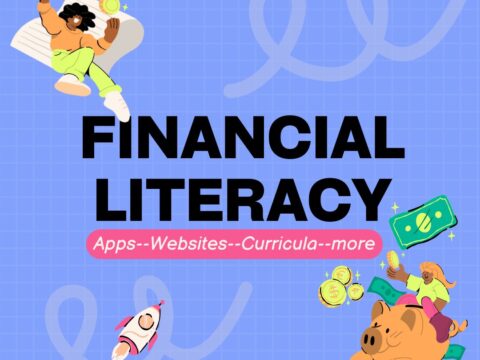How to Teach Financial Literacy Using Real-World Examples
There are quite a number of subjects that are not that easy to teach teens, especially big words like financial literacy and financial management. And helping them become money-savvy before they hit adulthood could be more than a challenge if you don’t have the best tools.
However, teaching them through real-world examples could transform not only your mentoring style but may also help make your very abstract subject very tangible, like these tricks.
Real-World Financial Lessons
Leveraging Technology: A Fun Approach to Financial Literacy
Today, maybe your best way to teach young ones about complicated concepts is through gadgets and devices. They just seem to connect better with fidgets and keyboards., which is why these innovations could be your best tools.
-
PiggyBot
It’s a video game that levels up as your students save so they can set savings goals and track progress interactively. This will make budgeting and saving lessons an engaging and visually rewarding experience.
-
Stock Market Challenge Apps
It’s an app that simulates investing in stocks with virtual currency to help students understand market fluctuations and some investment strategies. The app can turn complex financial activities into an exciting challenge.
-
Saving Spree
This is an educational game app where students make decisions on spending, saving, and donating, which can emphasize the consequences of their financial choices. It helps promote critical thinking about activities like money management.
By turning financial education 360 degrees from a chore into a thrilling game, your lessons stick, and students’ skills will grow naturally.
Use Real-World Banking Examples
It’s best to introduce your students to the world of depositing money, from savings to certificates of deposit (CDs), using simple but actual comparisons. You can explain that CDs are like secure treasure chests that build more money (the interest) if they’re only opened (because it’s locked) on the day agreed (termination date).
You can then compare savings accounts to a flexible piggy bank where they can easily get money from, but it earns less interest. This hands-on comparison can help your students grasp the benefits and the negative side of each, making financial products relatable and easier to understand.
It’s then easier to introduce them to bigger scenarios, like why it’s better to compare certificates of deposit to other accounts and consider the benefits for them when they’ll be handling more money in the future. When they get the idea, it’ll be more likely that they’ll encourage their moms and dads to invest in CDs, too.
Hands-On Activities: Creating Budgets
These are some of those fun activities that help students learn how to create personal budgets through these experienced examples.
-
Allowance Management
Say you implement a system in the classroom where your students get to earn “classroom dollars” for completed tasks or good behavior. They can then use these classroom dollars to “buy” privileges or items that the class designed beforehand.
-
Class Party Planning
You can also let your students take charge of planning an event, like a class party or a school dance, with a fixed budget. It’s best to guide them as they need to allocate funds for venue, decorations, food, entertainment, and other expenses.
-
Class Cooking Challenge
It will be a lot of fun if you challenge your students to have a cooking challenge where they’ll be given a set budget and a grocery list (draw lots). So, they need to research prices and plan a shopping list that stays within their budget.
This will be a great hands-on activity where they get to experience how their moms at home do it almost every day, budgeting and then preparing good food.
There are more ways where you can engage, challenge, and let your students experience firsthand what budgeting and holding on to money really means.
Involving Experts: Guest Speakers
You can invite financial experts to excite and challenge your students, like known financial advisors or bankers, to speak in class. A seasoned banker’s real-life stories about banking, their success accounts, and other achievement stories could make saving, investing, and credit scores more relatable.
It’s a way of giving students first hand insight into some financial concepts. And interacting with experts will show money’s real-world impact, boosting understanding and engagement. Your students are sure to remember these lessons better and for a long time.
Endnotes
It may not be easy, but as a teacher, some tips and tricks up your sleeve are part and parcel of the job. By devising engaging, fun, but 100% educational activities, you can share what it really means to “handle money” in real-life situations, whether good or bad.
With these insights, you’re on your way to teaching future financiers the fundamentals of financial literacy in a more effective manner.
–image credit to Deposit Photo
Here’s the sign-up link if the image above doesn’t work:
https://forms.aweber.com/form/07/1910174607.htm
“The content presented in this blog are the result of creative imagination and not intended for use, reproduction, or incorporation into any artificial intelligence training or machine learning systems without prior written consent from the author.”
Jacqui Murray has been teaching K-18 technology for 30 years. She is the editor/author of over a hundred tech ed resources including a K-12 technology curriculum, K-8 keyboard curriculum, K-8 Digital Citizenship curriculum. She is an adjunct professor in tech ed, Master Teacher, webmaster for four blogs, freelance journalist on tech ed topics, contributor to NEA Today, and author of the tech thrillers, To Hunt a Sub and Twenty-four Days. You can find her resources at Structured Learning.








































Love practical application ideas like these for the classroom.
Financial literacy is less about math than about adulting. Such important skills.
I think I am going to get PiggyBot for my daughter.
Tell me how it goes! There are clever ways to get kids thinking of money in a positive way.